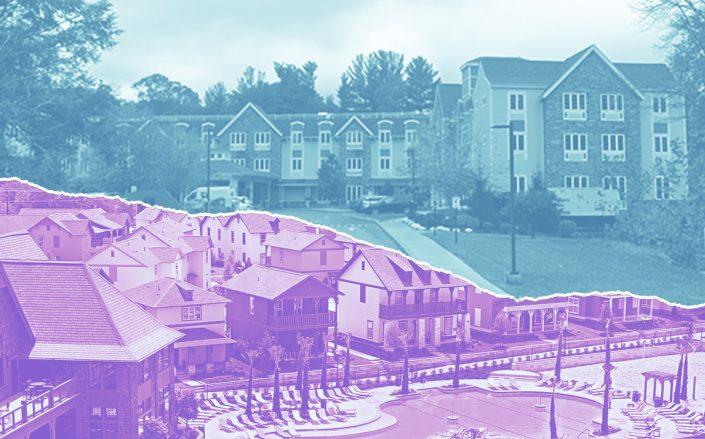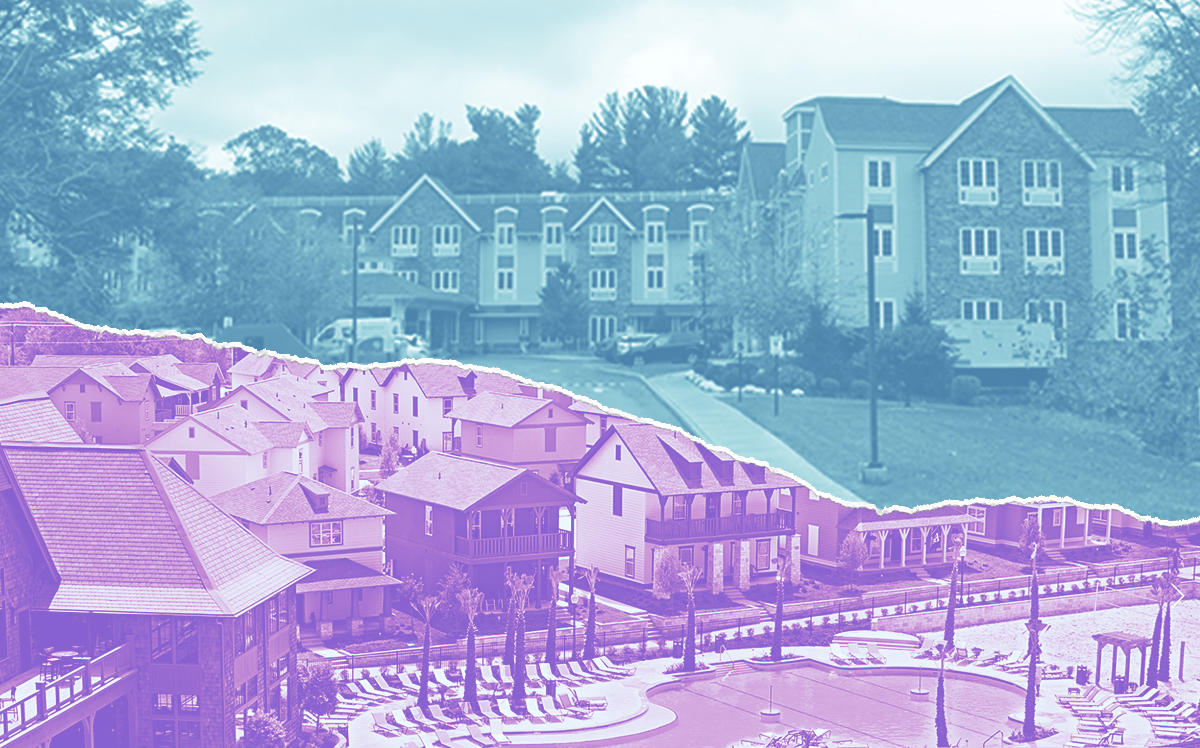
Senior living properties like the Ambassador at Scarsdale in White Plains, NY (top) and student housing like the Cottages of College Station in Texas were the hardest-hit multifamily subsectors. (Google Maps, The Cottages)
Since late March, Fannie Mae and Freddie Mac have been offering forbearance to multifamily borrowers hard hit by the coronavirus — on the condition that they do not evict any renters who have also felt the impact from the pandemic.
New research from data company Trepp shows how many multifamily borrowers have taken up that offer — as well as the property types and geographical areas that have been hurt the most by Covid-19.
While the overall forbearance request rate across all multifamily subtypes is about 2.1 percent, two sectors stand out for disproportionately high rates of forbearance. Student housing borrowers — which have been impacted by colleges shifting to online classes — have a 5.8-percent forbearance request rate, and senior living property borrowers — whose residents are particularly vulnerable to the virus — have a forbearance request rate of 6.6 percent.
While loans on properties in those two sectors make up just 8.5 percent of outstanding Fannie and Freddie multifamily debt, they account for about a quarter of forbearance volume.
Multifamily properties backing a total of $8.15 billion in Freddie Mac loans have requested or received Covid-related relief from, while another $4.65 billion in Fannie Mae loans have received forbearance, according to the report.
“It is important to note that loan statuses are fluid as negotiations among borrowers, lenders, and servicers continue on an ongoing basis,” the report notes, so the figures are “subject to change on a daily basis.”
Read more


On a geographic level, the New York metropolitan area is by far the hardest hit in the country, accounting for 18.4 percent of loan forbearances and 42 percent of Small Balance Loan forbearances. Within New York, Trepp notes that North Brooklyn, East Harlem, and the Bronx are among the most impacted submarkets.
Other heavily impacted metro areas include Houston, Atlanta, Los Angeles and Dallas. Texas as a whole is the second-most affected state after New York, accounting for 15.2 percent of forbearance volume.
“While unemployment remains elevated in the near-term, the U.S. multifamily market will continue to see headwinds in the coming months” Trepp analysts write in the report. They point to the end of both the government’s supplemental unemployment checks and eviction moratoriums for renters in federally-backed buildings as two of the biggest headwinds. Tepp added that surveys indicate many renters do not plan to renew their leases.
SBLs, which have sizes of up to $6 million, are also facing outsized stress in the pandemic. Such loans are “more commonly used as federal financing support for affordable or rent-stabilized housing as well as multifamily properties supplying more basic amenities,” Trepp notes.
“This gives them more exposure to lower/moderate-income or hourly paid tenant bases that have been especially hard hit by business layoffs and closures.”
The types of smaller properties financed by SBLs are also more sensitive to the financial hardships of each individual tenant, the report says. Of the 1,692 properties flagged by Trepp as having requested or received relief, more than half — 908 — belong to SBL borrowers. But because of their smaller size, SBLs make up just 18.5 percent of overall forbearance volume.
But a slowdown in forbearances and new delinquencies “is a hopeful sign that the worst is already behind us with states ramping up reopening plans and employees returning to work,” the report noted.
